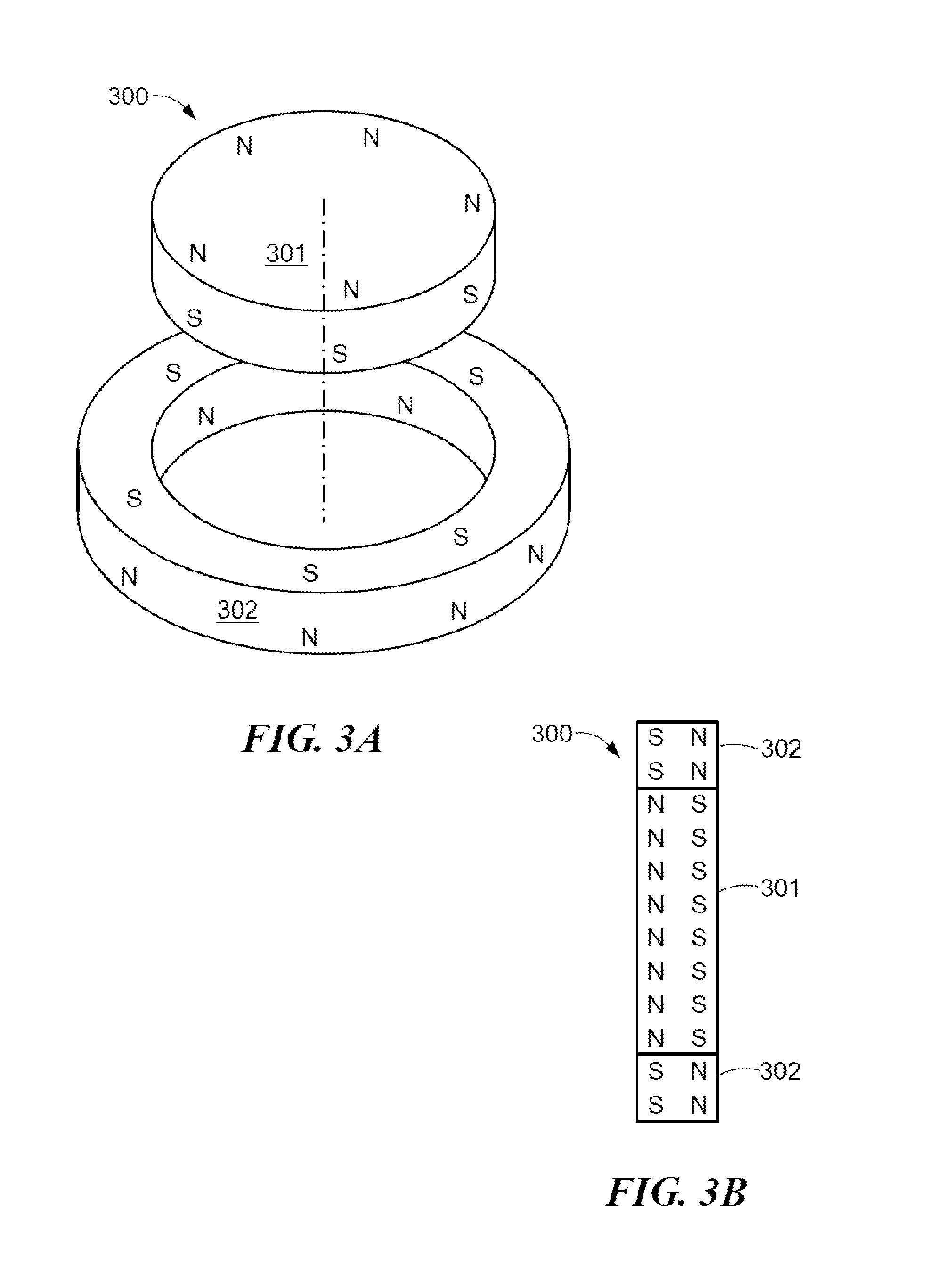Symmetric Magnet Arrangement for Medical Implants
a magnet arrangement and medical implant technology, applied in the field of permanent magnet arrangement, can solve the problems of not being strong enough to hold the external transmitter housing in the proper position, damage to adjacent tissue in the patient, magnetic resonance imaging,
- Summary
- Abstract
- Description
- Claims
- Application Information
AI Technical Summary
Benefits of technology
Problems solved by technology
Method used
Image
Examples
Embodiment Construction
[0022]Various embodiments of the present invention are directed to a two-fold symmetric implant magnet arrangement (e.g., radially symmetric) for a medical implant system including without limitation hearing implants (cochlear implant, middle ear implant, bone conduction implant, or vestibular implant), visual implants and laryngeal pacemakers. The magnet arrangement produces a low torque in the presence of an external homogenous magnetic field such as for an MRI examination, yet the near field magnetic force (for magnetic interaction with a corresponding external holding magnet) is high enough to be comparable to that produced by a conventional cylindrical magnet. Such magnet arrangements can be useful both for functioning as a holding magnet component to hold an external unit in a desired position on the skin of the patient user, and also for functioning as an actuator magnet in a mechanical stimulation implant such as a bone conduction implant.
[0023]FIG. 3A shows an exploded elev...
PUM
 Login to View More
Login to View More Abstract
Description
Claims
Application Information
 Login to View More
Login to View More - R&D
- Intellectual Property
- Life Sciences
- Materials
- Tech Scout
- Unparalleled Data Quality
- Higher Quality Content
- 60% Fewer Hallucinations
Browse by: Latest US Patents, China's latest patents, Technical Efficacy Thesaurus, Application Domain, Technology Topic, Popular Technical Reports.
© 2025 PatSnap. All rights reserved.Legal|Privacy policy|Modern Slavery Act Transparency Statement|Sitemap|About US| Contact US: help@patsnap.com



